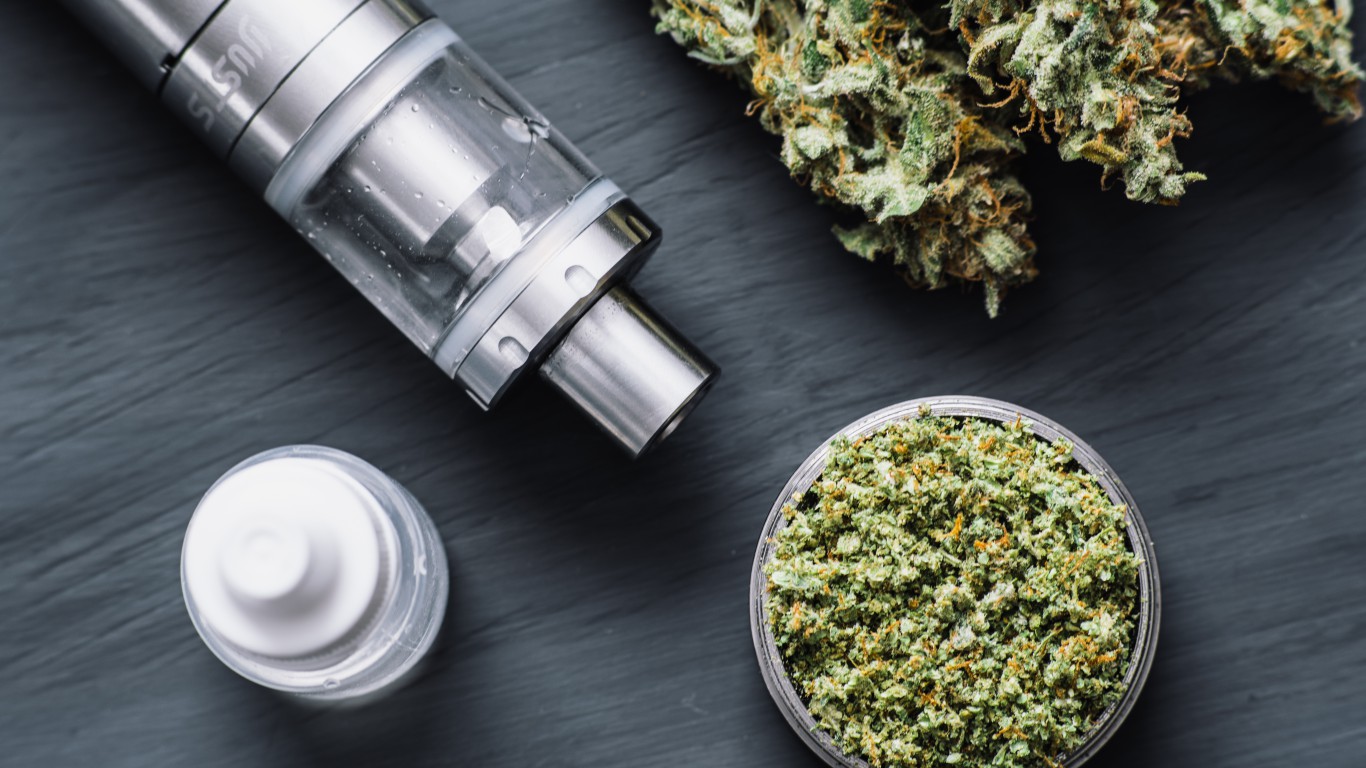
Cannabis investors had a tough year in 2019 and, so far, 2020 has done nothing but make matters worse. In 2019, marijuana stocks dropped between 13% and 75% of their value. For the year to date, losses range from nearly 25% to 63%.
If there were signs of a turnaround, Wall Street would be all over the pot stocks again. Unfortunately, that is not the case.
Aurora Cannabis Inc. (NYSE: ACB) dropped 56% last year and is down another 57% as of Friday’s close. Once considered among the best pot stocks to buy, Aurora stock recently traded under $1.00 a share, after beginning 2019 at around $10.00 a share.
Along with Tilray Inc. (NASDAQ: TLRY), Aurora is the best candidate to follow CannTrust, which last week was delisted at the New York Stock Exchange. CannTrust has since filed for Canada’s equivalent of bankruptcy protection. Tilray shares are down 64% for the year to date, after dumping 75% of its value in 2019.
Can Aurora do anything to avoid the same fate as CannTrust (or something worse)? Can anything the company does return it to its former glory?
What Aurora Said It Would Do
In early February, Aurora founder and CEO Terry Booth announced his retirement. Executive Chair Michael Singer was immediately named as interim CEO. Booth said he would stay on board and serve as a senior adviser.
At the time, Singer laid out a short-term plan:
I look forward to serving as Interim CEO and executing on our short-term plans, which include a rationalization of our cost structure, reduced capital spending, and a more conservative and targeted approach to capital deployment. These are necessary steps that reflect a fundamental change in how we will operate the business going forward.
The first step to rationalizing the cost structure was firing about 500 employees, including roughly 25% of the company’s corporate staff. In the same cost-cutting vein, Singer plans to cut SG&A expenses from C$70 million in the September quarter to a range of C$30 million to C$40 million by the end of its 2020 fiscal year ending June.
The company was expected to write down between C$930 million and C$1.3 billion on investments the company made in South America and Denmark. In the second quarter, Aurora’s balance sheet took a non-cash impairment charge of C$762.2 million on goodwill, nearly a quarter of the balance sheet total of C$3.17 billion.
A week later, when Aurora reported second-quarter results, Singer said that the company’s run rate for the quarter ending in June would be C$40 million to C$45 million. That would be less than half the SG&A expense of C$99.9 million Aurora posted in the second quarter.
Where the Money Went
Aurora had banked on 2020 as the year of cannabis 2.0, when edibles and other derivatives like vapes would boost revenues with a goal of posting an adjusted EBITDA profit. Launching new products is expensive, though, and the company said it didn’t expect third-quarter revenues to be much different from the C$65 million reported for the second quarter.
The catch is that the date of that profit may be too far in the future. Cannabis 2.0 products will certainly provide better margins than recreational sales of marijuana flower. Trolling for new customers, who are more valuable than current customers who switch to derivatives, also costs more. If new customers don’t show up in droves, then Aurora will either have to boost spending again or settle for its wholesale business in recreational and medicinal marijuana.
Burning cash by spending more on marketing runs counter to the company’s new way of thinking. If the company wants to achieve profitability, even on an adjusted EBITDA basis, it needs to boost its cash flow. It has chosen to do that by focusing on operations.
Are There Other Options?
The only other option is to raise more money, and there are just a few reasonable ways to do that. A secondary stock offering is not one of them. With the stock trading under a buck, even a private placement is probably off the table.
Then there’s debt. The latest data from Viridian Capital shows that cannabis companies have raised just $1.6 billion in capital this year. Of that, $609 million is debt in 23 transactions. That averages out to about $26.5 million per loan.
Aurora has taken a different tack on debt. The company recently reduced its term loan facility by C$96.5 million. It did so by eliminating its undrawn capacity and using C$45 million to repay a portion of its draw on that loan.
Following these changes, C$50 million remains in the company’s revolver, as well as C$507 in senior secured term loans and senior unsecured convertible debt. Aurora does not want to borrow more.
That leaves selling off properties or being acquired. Given a choice, Aurora might first go for the latter. After all, with shares trading so low, selling assets won’t do anything but send the share price lower.
The next milestone for the company will be its quarterly report. No date has been set, but late May would be a reasonable timeframe. That report had better show the company hewing to its new line. Given the scary economic situation though, more promises are likely what investors can expect.
The Average American Has No Idea How Much Money You Can Make Today (Sponsor)
The last few years made people forget how much banks and CD’s can pay. Meanwhile, interest rates have spiked and many can afford to pay you much more, but most are keeping yields low and hoping you won’t notice.
But there is good news. To win qualified customers, some accounts are paying almost 10x the national average! That’s an incredible way to keep your money safe and earn more at the same time. Our top pick for high yield savings accounts includes other benefits as well. You can earn up to 3.80% with a Checking & Savings Account today Sign up and get up to $300 with direct deposit. No account fees. FDIC Insured.
Click here to see how much more you could be earning on your savings today. It takes just a few minutes to open an account to make your money work for you.
Our top pick for high yield savings accounts includes other benefits as well. You can earn up to 4.00% with a Checking & Savings Account from Sofi. Sign up and get up to $300 with direct deposit. No account fees. FDIC Insured.
Thank you for reading! Have some feedback for us?
Contact the 24/7 Wall St. editorial team.


